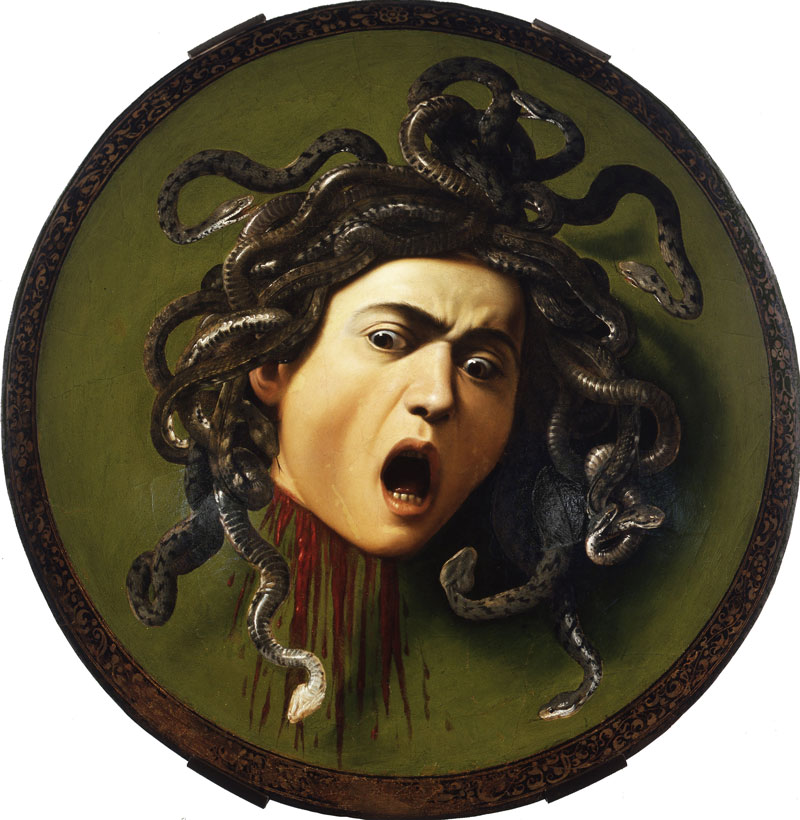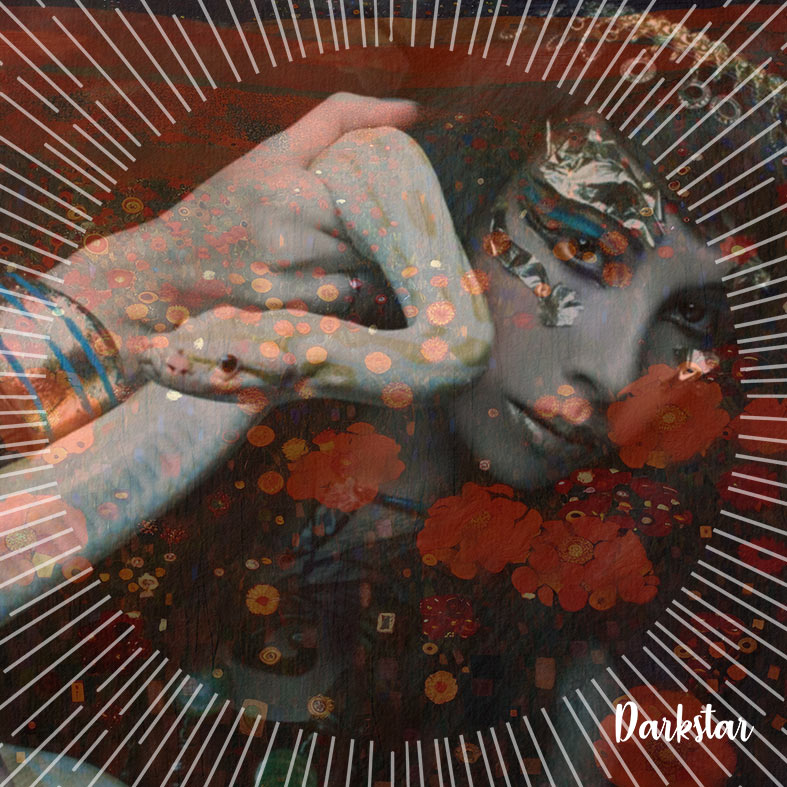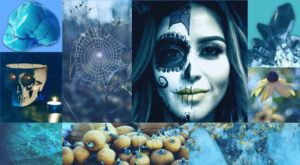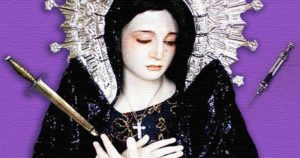What are the origins and spiritual meaning of Halloween? The history of this spookiest of holiday dates back to the Celtic tribes of Briton. Halloween has a mix of Christian, Roman and pagan origins. What not many people know is that Christianity inadvertently led to Halloween becoming associated with all things spooky. The trick or treat element, combined with the begging for sweets, originates from Guy Fawkes night which, in the UK, is held on November 5.
Pagan Origins Of Halloween
So let’s explore the origins of this darkest of holidays. We have looked at the Autumn equinox (Mabon) already in my Libra Season post. It is one of the major pagan holiday’s of the year on the wheel of the year. The astrological point of cross-quarter festivals is always 15º of the sign that the Sun occupies. So Samhain would be 15º Scorpio. (Naturally!)
Halloween then originates with Samhain, celebrated on November 1. The association with death comes from the fact that the nighttime hours in the northern hemisphere begin to become more than the daylight hours at this time of the year.
The Sun gets lower in the sky day by day. The nights are drawing in. There will be a celebration of the harvest that will see us through the long, cold winter months. But if the harvest was bad, then you could starve to death. So this time of the year was very much about life and death.
The Celts & Samhain
The Celts believed that during this transition from light to dark, time and space became permeable. So much so that Spirits of the dead and the past could merge into our reality. At the same time, we could time travel ourselves. They travel into other dimensions could be intentional or, if you had a very tenuous hold on reality, you could wander into the otherworld by mistake.
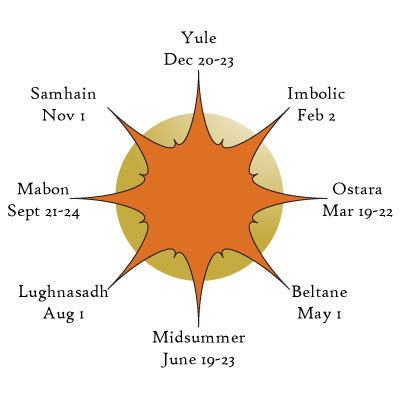
The root of all Halloween celebrations lies in the stories of people on Samhain nite getting trapped in the underworld. And that of the dead appearing among the living. Of course, this very much mirrors what is happening with nature.
The plants shrivel up and die, leaves dry up and fall to the grown. The autumn colours are intense reds, oranges, rusts, golds and rich yellows.
The glow of the bonfire reflects these warm colours. Of course, the signature orange pumpkins harvested at the end of October eventually became this holiday’s trademark in modern times.
Roman Lemuria & Exorcism Of Ghosts
The link between Christianity and Paganism is a fascinating one. Just as the Greek myths evolved into Roman myths, the same holds true in our story of Halloween. Back in Roman times, there was a spooky festival named Lemuria. (Interesting name given there are other associations with this word I haven’t got time to go into here but look up Lemuria. )
Lemuria was celebrated on the 9th, 11th and 13th of May. The Romans performed rites to exorcise ghosts and malevolent demons from their homes. Folk made offerings of beans to appease them. The custom was for the head of the household to walk barefoot and throw black beans over his shoulder at night.
The rest of the family would clash pots together while shouting, “Ghosts of my fathers and ancestors, be gone!” As a consequence of this banishing of evil spirits, the month of may was considered very unlucky for marriages. “Mense Maio Malae Nebunt” (translated meant “Bad girls wed in May!) The feast day later became ‘All Saints Day’ around 610 to honour the holiest of all the Christians

Halloween, ‘All Saints’ & Christianity
The holiday became such a success that the church leaders decided to move this feast date to the new date of November 1. The motivation behind the move was to take the heat out of the very popular Samhain festival that fell on the same day.
We can see very close connections between Samhain and All Saints in the Mexican Day of the dead, celebrated on the same days as Halloween and dates from the Spanish colonisation of South America.
“The multi-day holiday involves family and friends gathering to pray for and to remember friends and family members who have died. It is commonly portrayed as a day of celebration rather than mourning…. The celebration has always been family-oriented, and the idea of having a city-wide parade of people wearing Halloween-like costumes started only in 2016, the year after Metro-Goldwyn-Mayer invented a Day of the Dead parade in Mexico City for the James Bond film Spectre. “~ Wikipedia
What took place at the festival of Samhain?
After the last summer harvest, the villages joined with their druid priests to light a huge fire using a wheel to spark the flames. The wheel signified the rotation of the year and the Sun’s journey through the sky. Cattle were sacrificed, and the celebrants took a flame from the bonfire back home to light their home hearth.
Some documents mention the drinking of copious amounts of alcohol, indulgent feasting and revelry. You can see why people would look forward to this massive party after the hard work of harvesting. This indulgence is mirrored in modern Halloween, with children stuffing their faces with sweets.
Scary Monsters!
The monstrous side of Halloween also has origins in Samhain. The Celts believed the barriers between realms was permeable at this time. The Celts made offerings to the fairies and would dress as animals to prevent themselves from being kidnapped by these interdimensional beings. In the middle ages, the fire festivals became a tradition and were thought to protect the family home from cheeky fairies and witches. We think of fairies as being cute, benign creatures, but it seems the Celts believed otherwise!
Jack O’ Lantern Myth & Pumpkins
The pumpkin tradition started with the humble turnip. Children carved Turnips into faces, hung them on the end of a string and filled them with coal. The lantern was Irish in origin and called a Jack O Lantern named after a guy called ‘Stingy Jack’. According to legend, Jack invited the Devil out for a drink but didn’t want to pay.
Jack convinced the Devil to transform himself into coin form to pay for their drinks. However, Stingy Jack wanted to keep the cash, so he put the demonic coin next to a silver crucifix into his pocket. The cross prevented the Devil from returning into his bodily form. Eventually, Jack freed the Devil with the promise that he would not bother him for a year and that he would not claim his soul when he died.
Deals With The Devil
Years passed with stingy Jack tricking the Devil into stealing for him and then using a cross to keep him at bay. But when Jack died, God was not impressed with the trickery, so he barred jack from heaven. Of course, Jack was also banned from hell, so he was left wandering the earth with only a burning coal lantern to light his way.
England and Scotland made their own versions of the scary face carvings to ward off ‘Stingy Jack’ and other lost demons. The English used beetroots, but when they came to the USA, they found the giant American pumpkins were more than an ideal replacement for their little British root veggies.
Origins Of The Name Halloween
The transition from Samhain to what we know as Halloween comes from merging the pagan traditions with the Christian. Pagan Samhain fell on the night before the Christian ‘All Saints Day. In England, this day was known as ‘All Hallows Day’, so the night before was naturally called ‘All Hallows Evening’. This phrase was shortened to ‘All Hallows Even’, which was shortened again to become Hallowe’en!
The church took one more step to cement their claim on Halloween by adding a new holiday on November 2, ‘All Souls Day, for honouring the regular dead instead of the saintly ones. So now the creepy come into it as common folk tend to be more tainted than the heavenly saints! Average dead folk tend to sin more.
We return then to the Celtic idea of the thinning of the veil and the dark portal between life and death. So priests told Christians to pray for the souls trapped between heaven and hell in this nether region called purgatory. If enough people prayed for these poor unfortunate stuck souls, they would be elevated up into heaven and saved.
‘Treat Or Treat’ And Soul Cakes
The origin of ‘trick or treating’ has its roots again in Christianity. In medieval times children would go begging for ‘Soul Cakes’. In return, the children would promise to pray for the souls trapped in purgatory. As time progressed, the darker side of the tradition became more prominent, especially if there was a bad harvest.
So one can imagine that desperate families might send their kids to demand food for all the family from the wealthier households. Desperate times call for desperate measures, and you can see why the demands would get more threatening and even violent.
Drunken adults beggars would often accompany the children, and it would get quite rowdy. The gangs would start to wear masks to protect their identity, throwing stones at houses or setting livestock free when they didn’t get enough treats.
Another custom of the time was that wandering minstrels and gipsies would perform plays and songs on people’s doorsteps (again wearing masks and costumes) in return for food or money. Eventually, these traditions fell away as people grew tired of the chaotic pranks and destruction.
Halloween can be cathartic as it lets us play out our shadow side, and it is thrilling also. Halloween inspires the naughty child in all of us. At the same time, you can see that Halloween has brought to the surface all humanities fears and shadow side over the centuries. At Halloween, we learn to live and tame our evil twin and accept the ghosts of our past. It is an exercise in transmutation where we face our demons and make fun of them. Laughter kills parasites!



